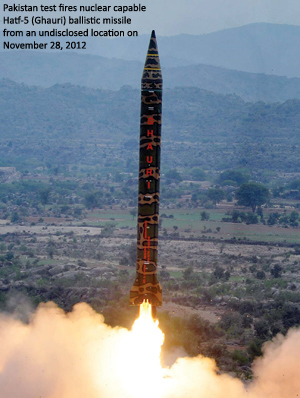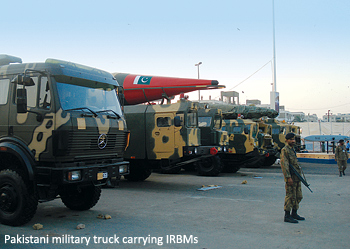INDIAN ARMED FORCES CHIEFS ON OUR RELENTLESS AND FOCUSED PUBLISHING EFFORTS

The insightful articles, inspiring narrations and analytical perspectives presented by the Editorial Team, establish an alluring connect with the reader. My compliments and best wishes to SP Guide Publications.

"Over the past 60 years, the growth of SP Guide Publications has mirrored the rising stature of Indian Navy. Its well-researched and informative magazines on Defence and Aerospace sector have served to shape an educated opinion of our military personnel, policy makers and the public alike. I wish SP's Publication team continued success, fair winds and following seas in all future endeavour!"

Since, its inception in 1964, SP Guide Publications has consistently demonstrated commitment to high-quality journalism in the aerospace and defence sectors, earning a well-deserved reputation as Asia's largest media house in this domain. I wish SP Guide Publications continued success in its pursuit of excellence.
- Appointments Committee of Cabinet approves one-month extension in service of Chief of the Army Staff
- Admiral Dinesh K. Tripathi assumes Command of the Indian Navy as 26th Chief of the Naval Staff
- Prime Minister witnesses 'Bharat Shakti' – a Tri-Services Firing and Manoeuvre Exercise in Pokhran, Rajasthan
- Interim Defence Budget 2024-25 — An Analysis
- Union Defence budget 2024
- Prime Minister Modi Commemorates Indian Navy Day in a Grand Ceremony
Pakistani nuclear bomb
Zulfiqar Ali Bhutto is credited to be the founder of Pakistan’s atomic bomb. In 1956 he played a key role in setting up the Pakistan Atomic Energy Commission (PAEC). As the Minister for Fuel, Power, and National Resources in 1960, he directed funds for research in nuclear weapons. Immediately after the 1965 war he made that, highly quoted, statement, “If India builds the bomb, we will eat grass and leaves for a thousand years, even go hungry, but we will get one of our own.” Pakistan started working towards a nuclear bomb in all earnest in 1972 when they heard of advanced Indian nuclear research at Trombay. Along with India and Israel it remained outside the Nuclear Non-Proliferation Treaty (NPT). On May 18, 1974, India tested a 10-15-kilotonnes device; code named ‘Smiling Buddha’, at Pokhran in the Rajasthan desert, and called it a ‘peaceful nuclear explosion’. Bhutto launched an aggressive campaign and refused to be subjected to ‘nuclear threat and blackmail’. It also became a trigger to launch an extensive plutonium reprocessing and uranium enrichment programme. Abdul Qadeer Khan (AQ) joined the programme in 1976 and later became the ‘father’ of the Pak bomb.
An implosion type test was reportedly carried out in Pakistan in 1978 and successful cold tests in 1983. Finally, on May 28, 1998, a few days after India’s second nuclear test ‘Operation Shakti’, Pakistan detonated five nuclear devices at Chagai in Baluchistan. This was followed by a sixth test of a weapons grade ‘plutonium’ device few days later. These became known as the Chagai I and II tests. The underground iron-steel tunnels had been constructed a few years earlier indicating premeditated intent. In 1999 Prime Ministers Nawaz Sharif of Pakistan and Atal Bihari Vajpayee of India signed the ‘Lahore Declaration’ agreeing to a bilateral moratorium on nuclear testing. Since then, the two have been regularly exchanging lists of nuclear facilities. Another agreement signed in March 2005 expects both nations to alert the other on ballistic missile tests and a hotline is maintained for the purpose.
Nuclear Capability

Pakistan is known to have around 110 nuclear warheads. Weapons can be carried by more than 50 modified F-16 and JF-17 aircraft. The air-launched nuclear tipped cruise missile has a range of 350 kilometres. Pakistan possesses a variety of Shaheen and Ghauri series nuclear-capable ballistic missiles with ranges up to 2,500 kilometres. It has 700-km range nuclear-armed Babur cruise missiles. Pakistan is also supposedly developing battlefield tactical nuclear weapons of around 60-km range. The land-based missiles are controlled by Pakistan Army. Pakistan is also developing a sea-based variant of the Hatf VII Babur cruise missile and nuclear tipped torpedoes. Pakistan Navy (PN) also wants to kick-start a proposal to build its own nuclear submarine as a direct response to the Indian nuclear submarine programme. Pakistan has also been increasing its capacity to produce plutonium, a fuel for atomic bombs.
The world, led by United States, has been repeatedly blaming China for transfer of technology and materials to support Pakistan’s nuclear and missile programmes. US intelligence has confirmed Pakistan’s second-strike capability. “Don’t assume that the Pakistan’s nuclear capability is inferior to the Indians”, US General Zinni, former US Central Command (CENTCOM) Commander reportedly told TV channel NBC sometime back. In 2010 a Russian Foreign Ministry report indicated 1,20,000 personnel directly involved in Pakistan’s nuclear and missile programme. India has for years been championing the cause of global disarmament, however, is not open to declaring only South Asia as a nuclear weapons free zone in view of possible threat from China.
Will Use Strategy

Pakistan has openly stated that “it will use nuclear weapons ‘even if India did not use’ atomic weapon first”. This is their way of deterrence to a superior conventional threat. The success of such a doctrine was visible from India’s subdued response after the terrorist attacks on the Indian Parliament and Mumbai. Political scientist Vipin Narang argues that Pakistan’s asymmetric escalation posture, or the rapid first use of nuclear weapons against conventional attacks has neutralised India’s conventional options for now. Pakistani officials and strategists emphasise that nuclear deterrence will maintain a balance and safeguard its sovereignty and ensure peace in the region. President Zia-ul-Haq had reportedly said in 1987 that “If Indian forces cross our border by an inch, we will annihilate Indian cities”.
To exercise control over nuclear weapons, Pakistan set up the National Command Authority (NCA) in February 2000. It is comprised of two civil-military committees that advise the Prime Minister and President on the development and deployment of nuclear weapons. In November 2009, President handed over the chairmanship of NCA to the Prime Minister. Chairman, Joint Chiefs of Staff Committee (JCSC) is the deputy chairman. The committees include senior cabinet ministers and the respective military chiefs of staff. NCA establishes guidelines for effective command-and-control to safeguard against the accidental or unauthorised use of nuclear weapons. Under the NCA, Strategic Plans Division (SPD) is responsible for the physical protection and to ensure security of all aspects of country’s nuclear arsenals and functions under the JCSC which reports directly to the Prime Minister.
Rogue Elements
The United States has confirmed from satellite images that Pakistan has dispersed its nuclear weapons across the country, increasing the risk of falling into terrorist hands. In view of the crumbling political status of Pakistan, the United States has been worried about these weapons falling into rogue hands. Pakistan administration has however been claiming that their weapons are more secure than anywhere else in the world. More than the threat from India, Pakistan has of late been worried about possible US attacks to disarm their nuclear arsenal.
Preventing Pakistan’s nuclear weapons and technology from falling into the hands of terrorists has thus been top US priority. Growing anti-America sentiment among junior Pakistani armed forces officers is bothersome. The Times published a report in early 2010 that the US is training an elite group to recover Pakistani nuclear weapons or materials should they be seized by militants. A Harvard University study titled ‘Securing the Bomb 2010’, found that Pakistan’s weapons “face a greater threat from Islamic extremists seeking nuclear weapons than any other nuclear stockpile on earth”. However, in April 2011, International Atomic Energy Agency (IAEA) declared that Pakistan’s nuclear programme is safe and secure. Pakistan is training a special force to protect the nuclear arsenal which is expected to be ready later 2013.
A recently published collection of essays by eminent Pakistani and Indian scientists documented in ‘Confronting the Bomb: Pakistani and Indian scientists speak out’ (Oxford University Press) covers some ground realities. The nuclear landscape in South Asia is dynamic and a complex mixture of politics, technology, and emotion; nuclear debates in the two countries are less analytical and more rhetoric; Pakistan feels they have achieved the cold war deterrence scenario; Pakistan continues to have the fastest growing nuclear arsenal; If India were to react militarily to a future trigger event, Pakistan is doctrinally willing to unleash nuclear weapons; Pakistani nukes are in safe and secure hands; Pakistan Army is steadily getting Talibanised; As part of Shia-Sunni rift Pakistan sides with Saudi Arabia, and in spite having initially supported covertly, is worried about Iranian nuclear programme. Pakistan’s nuclear complex could be sympathetic with the Saudi kingdom’s nuclear ambitions for religious reasons and financial opportunity. A shift on the subcontinent towards tactical nuclear warfare increases the threat of a nuclear confrontation and the danger of losing command and control of nuclear weapons. Serious emotion chargeddispute over Kashmir and short missile flight-time make South Asia a high risk zone. The divisions within Pakistan, its Army and the powerful Inter-Services Intelligence (ISI) over the issues of national identity and the role of Islam add to the risk.
Pakistani nuclear bomb seems to have served the purpose. It has emboldened an otherwise failing state to push its political agenda and systematically bleed India through low-cost state sponsored terrorism. It’s ‘Will First Use’ policy has proved a deterrent. It has repeatedly forced India to negotiating table even after major Paksponsored terrorist attacks. Did India miss an opportunity to teach a lesson during the Kargil War when the world opinion was with us? Are we now branded a weak nation?





